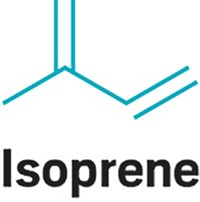Advertisement
Grab your lab coat. Let's get started
Welcome!
Welcome!
Create an account below to get 6 C&EN articles per month, receive newsletters and more - all free.
It seems this is your first time logging in online. Please enter the following information to continue.
As an ACS member you automatically get access to this site. All we need is few more details to create your reading experience.
Not you? Sign in with a different account.
Not you? Sign in with a different account.
ERROR 1
ERROR 1
ERROR 2
ERROR 2
ERROR 2
ERROR 2
ERROR 2
Password and Confirm password must match.
If you have an ACS member number, please enter it here so we can link this account to your membership. (optional)
ERROR 2
ACS values your privacy. By submitting your information, you are gaining access to C&EN and subscribing to our weekly newsletter. We use the information you provide to make your reading experience better, and we will never sell your data to third party members.
Business
Biobased Milestones
Renewables: Multiple firms mark progress on manufacturing chemicals and fuels from sugar
by Melody M. Bomgardner
April 2, 2012
| A version of this story appeared in
Volume 90, Issue 14

Biobased chemical and fuel companies went on a press-release spree last week with announcements about new products, successful partnerships, and manufacturing scale-ups. Analysts still say the amount of biobased chemicals that will enter commerce in the next three years will be small, but they note that the firms are building credibility with partners and customers.
Succinic acid producer BioAmber said it has branched out to make 1,4-butanediol, tetrahydrofuran, and γ-butyrolactone using hydrogenation catalyst technology licensed from DuPont. The multiton quantities were produced from succinic acid at a toll manufacturing plant. Manufacturers use the three chemicals to make polyesters, polyurethanes, spandex, and biodegradable plastics.
Meanwhile, Virent and Virdia joined forces to produce gasoline and jet fuel from pine tree biomass. Virdia extracts sugars from cellulosic biomass through a low-energy hydrolysis process using hydrochloric acid. Virent uses the sugar in its own catalytic process to make the fuels. The firms report that the jet fuel passed strict specification tests at the Air Force Research Laboratory.
OPX Biotechnologies has scaled up its process for making acrylic acid from sugar. The company says it produced hydroxypropionic acid in a 3,000-L fermenter operated by the Michigan Biotechnology Institute. OPX is working with Dow Chemical to convert the intermediate into acrylic acid via catalytic dehydration. Dow will also provide access to acrylic markets including diapers, detergents, paints, and adhesives.
OPX faces competition from Myriant Technologies, which said it will produce samples of its own acrylic acid in the second half of 2012. Myriant currently makes
The milestones are the result of “years of toiling in the field,” says Ronald F. Cascone, principal at Nexant, an energy and chemical consulting firm. Companies making drop-in replacements for petrochemicals, Cascone says, are more likely to succeed in the near term if their processes require few steps. He adds that supportive partnerships with established firms also help. As an example, Cascone cites Shell’s decision to build a biofuels pilot plant using technology licensed from Virent.



Join the conversation
Contact the reporter
Submit a Letter to the Editor for publication
Engage with us on Twitter